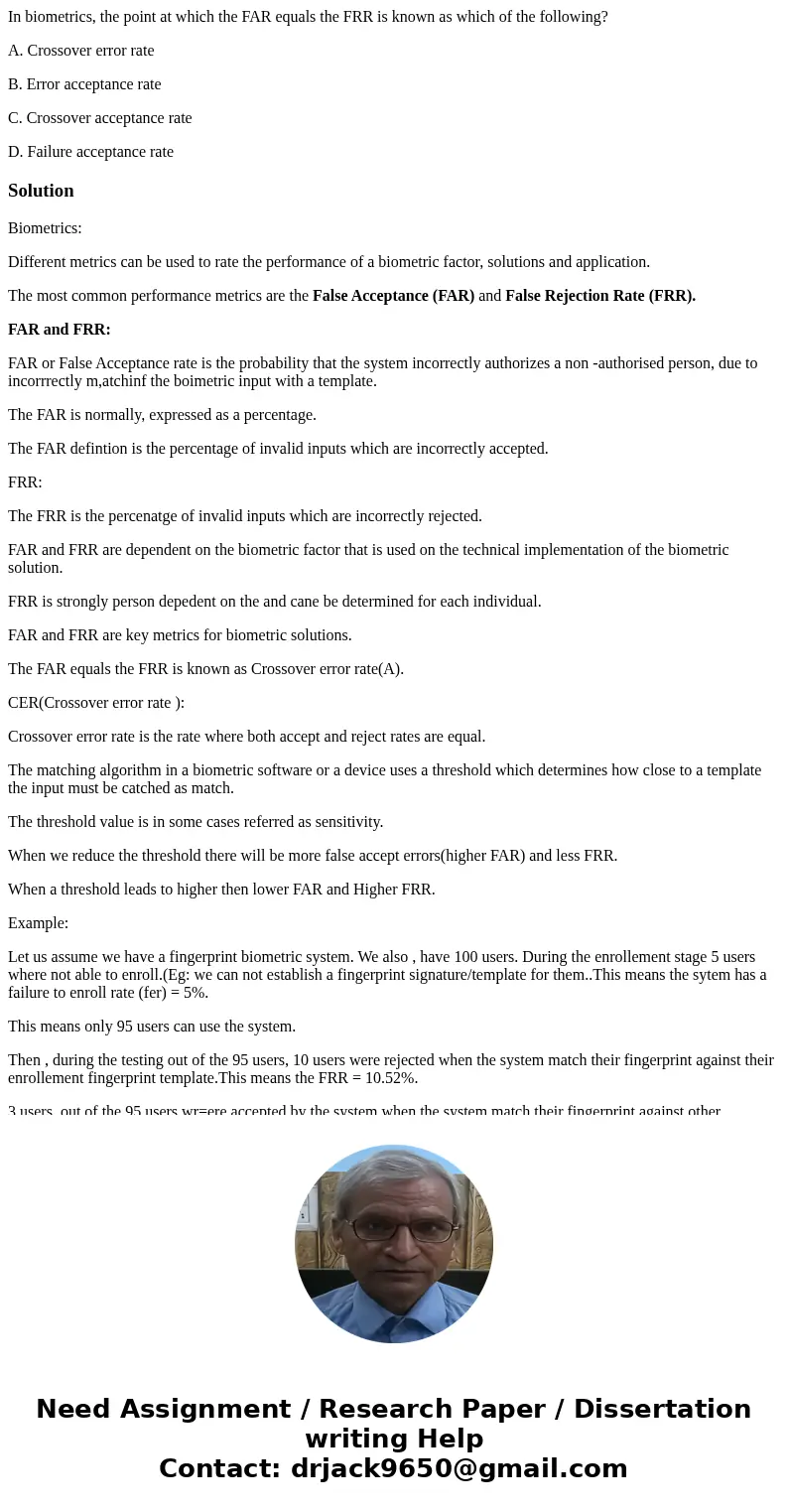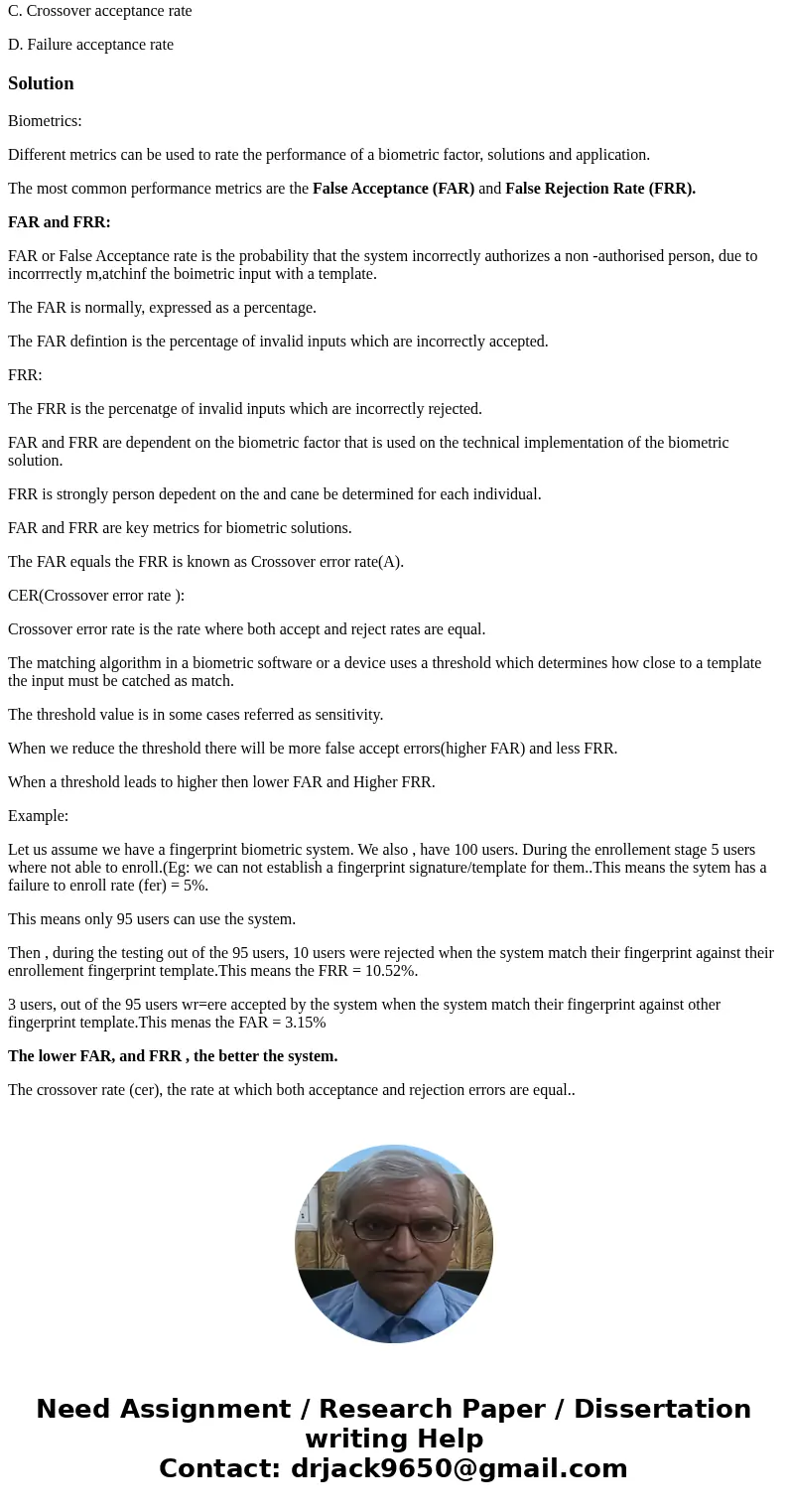In biometrics the point at which the FAR equals the FRR is k
In biometrics, the point at which the FAR equals the FRR is known as which of the following?
A. Crossover error rate
B. Error acceptance rate
C. Crossover acceptance rate
D. Failure acceptance rate
Solution
Biometrics:
Different metrics can be used to rate the performance of a biometric factor, solutions and application.
The most common performance metrics are the False Acceptance (FAR) and False Rejection Rate (FRR).
FAR and FRR:
FAR or False Acceptance rate is the probability that the system incorrectly authorizes a non -authorised person, due to incorrrectly m,atchinf the boimetric input with a template.
The FAR is normally, expressed as a percentage.
The FAR defintion is the percentage of invalid inputs which are incorrectly accepted.
FRR:
The FRR is the percenatge of invalid inputs which are incorrectly rejected.
FAR and FRR are dependent on the biometric factor that is used on the technical implementation of the biometric solution.
FRR is strongly person depedent on the and cane be determined for each individual.
FAR and FRR are key metrics for biometric solutions.
The FAR equals the FRR is known as Crossover error rate(A).
CER(Crossover error rate ):
Crossover error rate is the rate where both accept and reject rates are equal.
The matching algorithm in a biometric software or a device uses a threshold which determines how close to a template the input must be catched as match.
The threshold value is in some cases referred as sensitivity.
When we reduce the threshold there will be more false accept errors(higher FAR) and less FRR.
When a threshold leads to higher then lower FAR and Higher FRR.
Example:
Let us assume we have a fingerprint biometric system. We also , have 100 users. During the enrollement stage 5 users where not able to enroll.(Eg: we can not establish a fingerprint signature/template for them..This means the sytem has a failure to enroll rate (fer) = 5%.
This means only 95 users can use the system.
Then , during the testing out of the 95 users, 10 users were rejected when the system match their fingerprint against their enrollement fingerprint template.This means the FRR = 10.52%.
3 users, out of the 95 users wr=ere accepted by the system when the system match their fingerprint against other fingerprint template.This menas the FAR = 3.15%
The lower FAR, and FRR , the better the system.
The crossover rate (cer), the rate at which both acceptance and rejection errors are equal..


 Homework Sourse
Homework Sourse